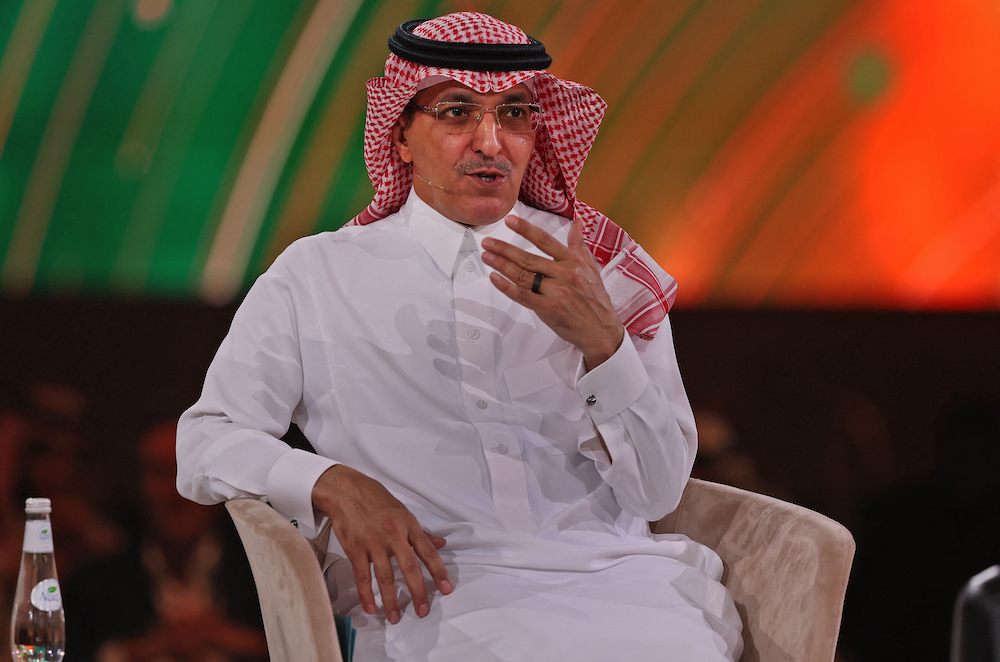RIYADH: Saudi Arabia is forecasting a budget deficit of 15.34 billion riyals ($4.09 billion) in the second quarter of 2024, compared with 35% of the full-year forecast set by the finance ministry.
According to the latest data, Saudi Arabia has run a lower-than-expected budget deficit so far this year, suggesting higher-than-expected revenues or a change in fiscal management in the first half of 2024.
The ministry’s quarterly performance report also showed that revenues rose 12% compared to the same period last year, totaling SR353.59 billion. Meanwhile, expenditures increased 15%, reaching SR368.93 billion.
Finance Minister Mohammed Al-Jadaan said in December that Saudi Arabia's 2024 annual budget was based on “very conservative” estimates of oil revenues.

Despite this cautious approach, oil imports increased by 18% in the second quarter of 2024 compared to the same period last year, reaching a total of SR212.99 billion. Non-oil imports also increased by 4%, reaching SR140.6 billion.
The increase in oil imports can be attributed to the rise in crude oil prices over the past year. The average crude oil price in the second quarter of 2024 was approximately $76.69 per barrel based on monthly closing figures, compared to $71.83 in the same period in 2023.
This increase in revenue came despite OPEC+ implementing production cuts and Saudi Arabia implementing further cuts, bringing output down to 9 million barrels per day.
Taxes on goods and services increase non-oil revenues.
According to the ministry, taxes on goods and services accounted for 50 percent of non-oil revenues, totaling about 70 billion riyals.
Other revenues, the second largest at 20%, include income from various sources, including sales from public government agencies including the Central Bank of Saudi Arabia, agencies including advertising and port services, administrative fees, fines, penalties and confiscations.

Saudi Finance Minister Mohammed al-Jadaan said the kingdom's annual budget for 2024 was based on “very conservative” estimates of oil revenues. File/AFP
Other taxes accounted for 17%, or about SR 24 billion, while taxes on income, profits and capital gains accounted for 9%, or a total of SR 12.65 billion. This significant contribution highlights the kingdom’s efforts to diversify its sources of income beyond oil, reflecting effective fiscal reforms and a broader tax base.
Saudi Arabia is actively working to diversify its economy through investments in non-oil industries such as tourism, entertainment, and renewable energy. Initiatives such as Vision 2030 aim to reduce oil dependence by promoting a more diverse and sustainable economic environment.
expenditure
Saudi Arabia's non-financial capital expenditures (also known as CAPEX) drove most of the spending growth during the period.
This category saw a 53% increase, reaching a total of SAR 66.41 billion, which includes investments in physical assets such as buildings, machinery and infrastructure, aimed at strengthening the Kingdom’s capabilities and capacities.
The ministry said in its December 2024 budget report that spending will increase in the coming years to accelerate the implementation of key programs essential to Saudi Vision 2030 goals. The quarterly deficit is therefore within the expected range, reflecting prudent fiscal management.

According to the ministry report, employee compensation was the highest at 38% and increased by 4% during the period. Utilization of goods and services came in second at 20% and increased by 19% compared to the same quarter last year.
This category represents the total amount spent by the government on acquiring goods and services for various purposes, such as operating activities or resale. It reflects the government's consumption or investment in resources needed for operations, excluding changes in inventory levels.
The Treasury report said the deficit would be financed through borrowing.
At the end of the period, domestic debt totaled SR680.29 billion, or 59%, while foreign borrowings accounted for the remaining 41%, or SR468.92 billion.
Compared to advanced economies and G20 countries, Saudi Arabia’s public debt to GDP remains relatively low. In addition, it is backed by government reserves, providing a significant buffer against potential financial distress or economic downturns. This strengthens the Kingdom’s financial stability and ability to meet its fiscal obligations.
